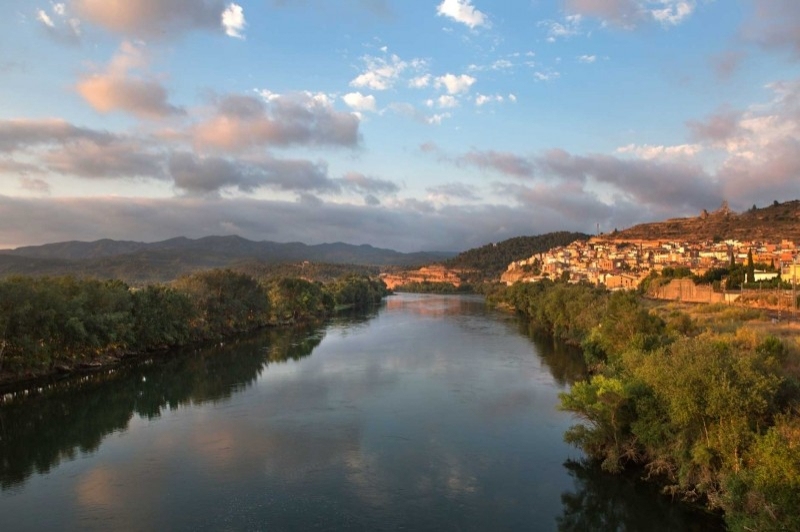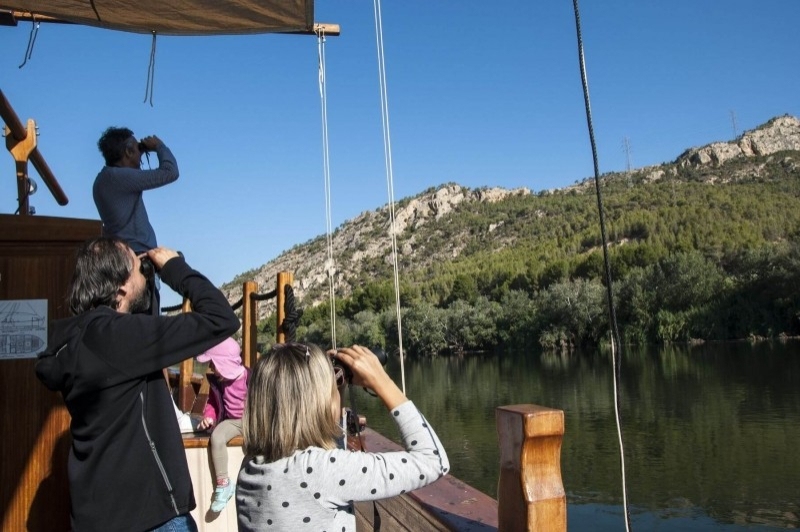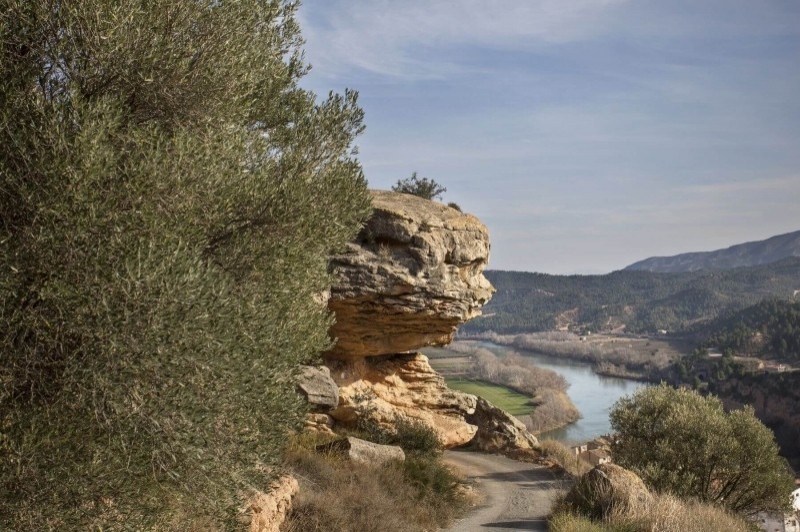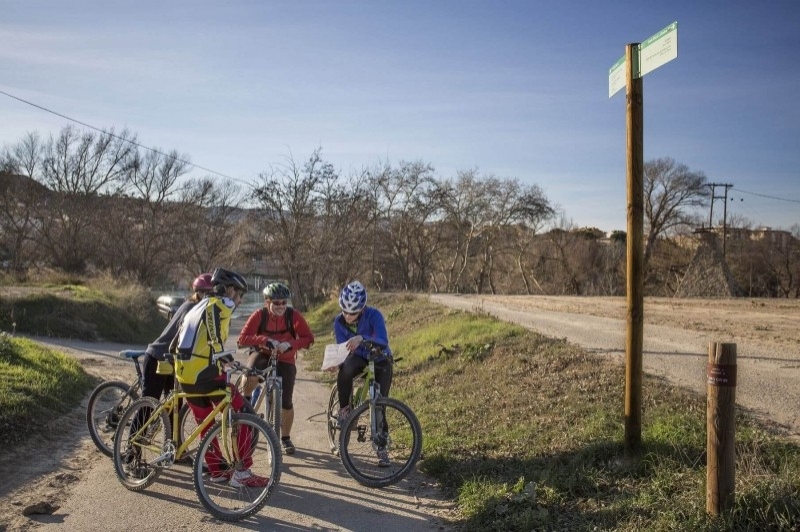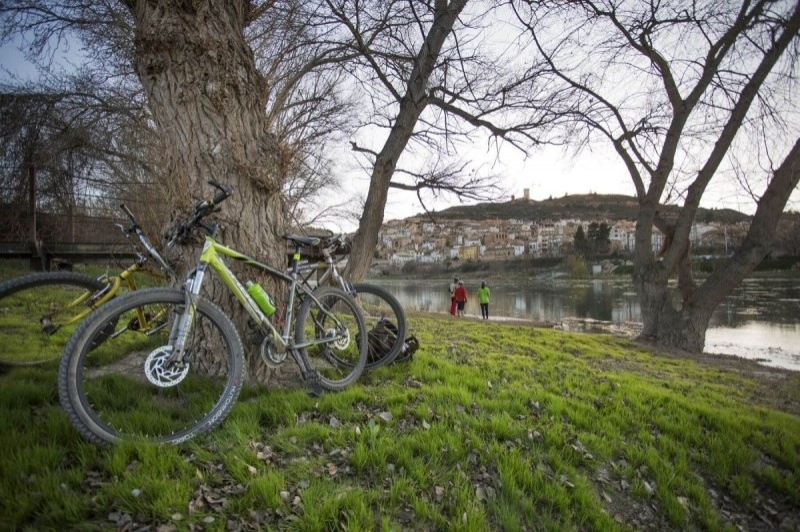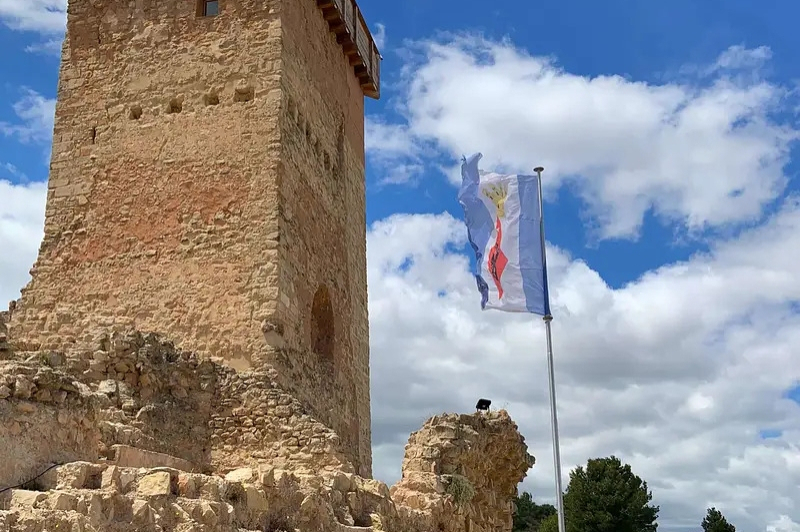Ascó
Ascó is located in a strategic location in the Catalan Ebro, it rises just next to the river and in the middle of a great fluvial plain closed by two passages or straits, the Paso del Asno and the Paso del Lobo de Andisc. The strategic location of Ascó led to the occupation of different prehistoric peoples such as Iberians and Romans, but it was not until medieval and modern times that Ascó took a greater role, first with the Muslim occupation and later with the Templar occupation and the Catalan counts..
The cultural treasure symbolizes the passage and coexistence of different cultures that have left a very rich heritage and cultural legacy and that today is part of the traditions and customs of Ascó.
Places of interest
Snow Pit
From the second half of the seventeenth century, the Ascó snow well is the only one that remains in this region. Located in the foundations of a house, it is built of crushed stone and with a pointed vault, circular and acorn-shaped. The upper beams rest on corbels at different heights for the snow conservation deck, which was poured from a window.
Their purpose was to fill it with snow or ice and dispose of it for the rest of the year. During that time the storage and distribution of ice became an important business that involved a significant part of the rural population.
Knight's Mill
At the beginning of the 20th century, about twenty oil mills operated simultaneously in Ascó. The great concentration of these industries was due to the fact that the peasantry, and in particular the cultivation of the olive tree, constituted the main economic source of the town.
Today most of these mills have disappeared. The Caballero mill, recently recovered and restored, will take us, when visiting it, into what this industrial heritage meant for the municipality.
Turns and silos
The old Muslim aljama was located in the Plaza Mayor, later the university, later the city house until 1987 and, today, we find the municipal music school. Above the entrance arch of this building we can read the date 1610, which corresponds to the year of expulsion of the Moors.
This square is built on top of some stone turns which can be accessed by going down the alley known as La Secanella. This place is called Las Vueltas and Sitges. Inside, some silos recall the cereal storage function that Ascó had already perceived since Muslim times.
Els perxes
The old porches that gave entrance to the walls of Ascó are thus designated. On Calle de Abajo we find those of El Ciego, Baijunca and Caballero; on Hospital Street, and attached to the house of the same name, we find the Peresans dog; in the street of the Plaza Nueva, the perxe of Santo Domingo, and to the Plan de Vallxiqué, the Puerta de la Tarde, today disappeared.
In the Plaza there is another of the doors of the town and in Calle de la Mola they are still preserved, a narrow alley or clandestine entrance and exit corridor of the town.
Sequerets Street
With the expulsion of some 800 Moors and Moors by Felipe II of Aragon (III of Castile) who occupied 154 houses, the Moorish period in Ascó ended.
It is a zigzag-shaped street that the hospitalists gave to the university, and the university turned it into a slaughterhouse for fruits such as figs or raisins. The diminutive name los asecaderos remained as a place name.
Mola street
It is undoubtedly, together with Sequerets street, one of the most typical streets of Ascó. This balcony over the Ebro follows the old layout of the walls of Ascó. In Carrer de la Mola, the houses free the corridor of walls destroyed by bombardments from the other side of the river during the Civil War of 1936-1939. Today you can still see some of the remains of these walls in La Mola, in the Plaza Nueva and in the streets of Caballero and Trinquete. The walls of the squares and the walls of the houses are made of stone and mud or, simply, of tapió.
Calle de la Mola, in the shape of a horseshoe, preserves the typical portals of the brick houses in a fan, with a clear Moorish influence. From this place you have a magnificent view over the Ebro, the Islands, the Paso del Asno and the Montsant in the background.
Nearby routes
See all routes »- Route of the Peace: The Battle of the… (a 8.1 km)
- Wine landscapes: DO Terra Alta (a 13.8 km)
- Grand Tour de Catalunya - Section 2.… (a 15.9 km)
- Inside the Ebro river (a 15.9 km)
- 3 routes through some of the most beautiful… (a 15.9 km)
What to do
Museu del Ferrocarril de Móra la Nova
Móra la Nova (a 10.8 Km)Located in the old railway facilities of Móra la Nova, where you…
La Passió de Vilalba dels Arcs
Vilalba dels Arcs (a 14.9 Km)The Passion of Vilalba brings us closer to the social and cultural…
Where to eat
Restaurant Hotel Nou Moderno
Vilalba dels Arcs (a 15 Km)Hotel restaurant to enjoy the tranquility of Terra Alta and try the…
Where to sleep
Restaurant Hotel Nou Moderno
Vilalba dels Arcs (a 15 Km)Hotel restaurant to enjoy the tranquility of Terra Alta and try the…
Hotel Celler Buil & Giné
Gratallops (a 17.5 Km)A unique experience, a different and unique accommodation, we offer the possibility…
Ca la Leonor
Bot (a 24.7 Km)Rural house from 1880, renovated in 2012, preserving the original wooden beams…
Enoturisme Celler Piñol
Batea (a 23.7 Km)Celler Piñol is a family winery located in Batea, dedicated to producing…
Events
Experiences
The great Train Festival returns to Móra la Nova!
Museu del Ferrocarril de Móra la Nova (Móra la Nova) (a 10.8 Km)

